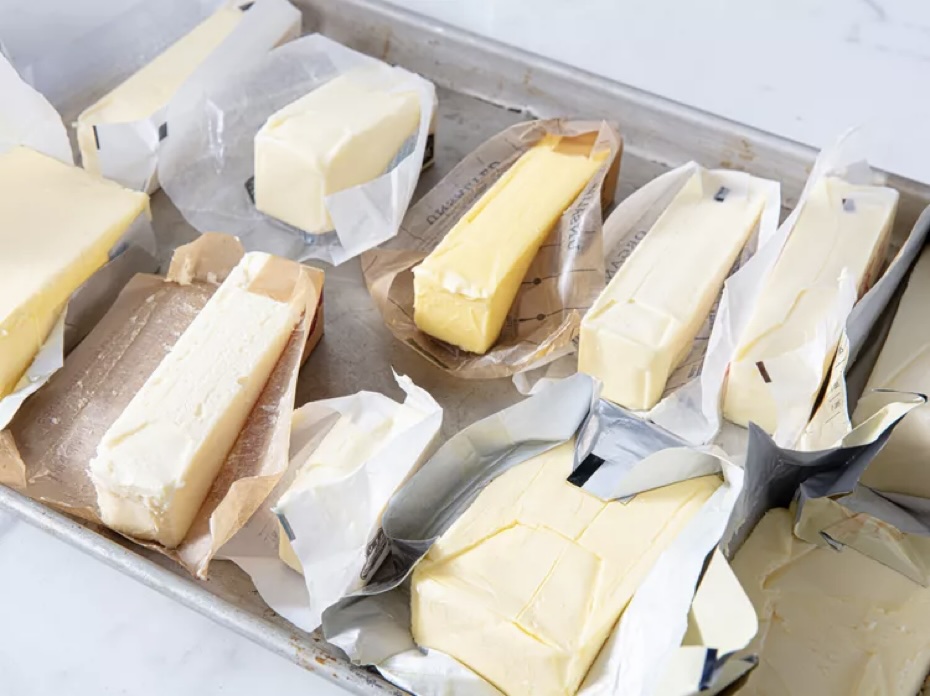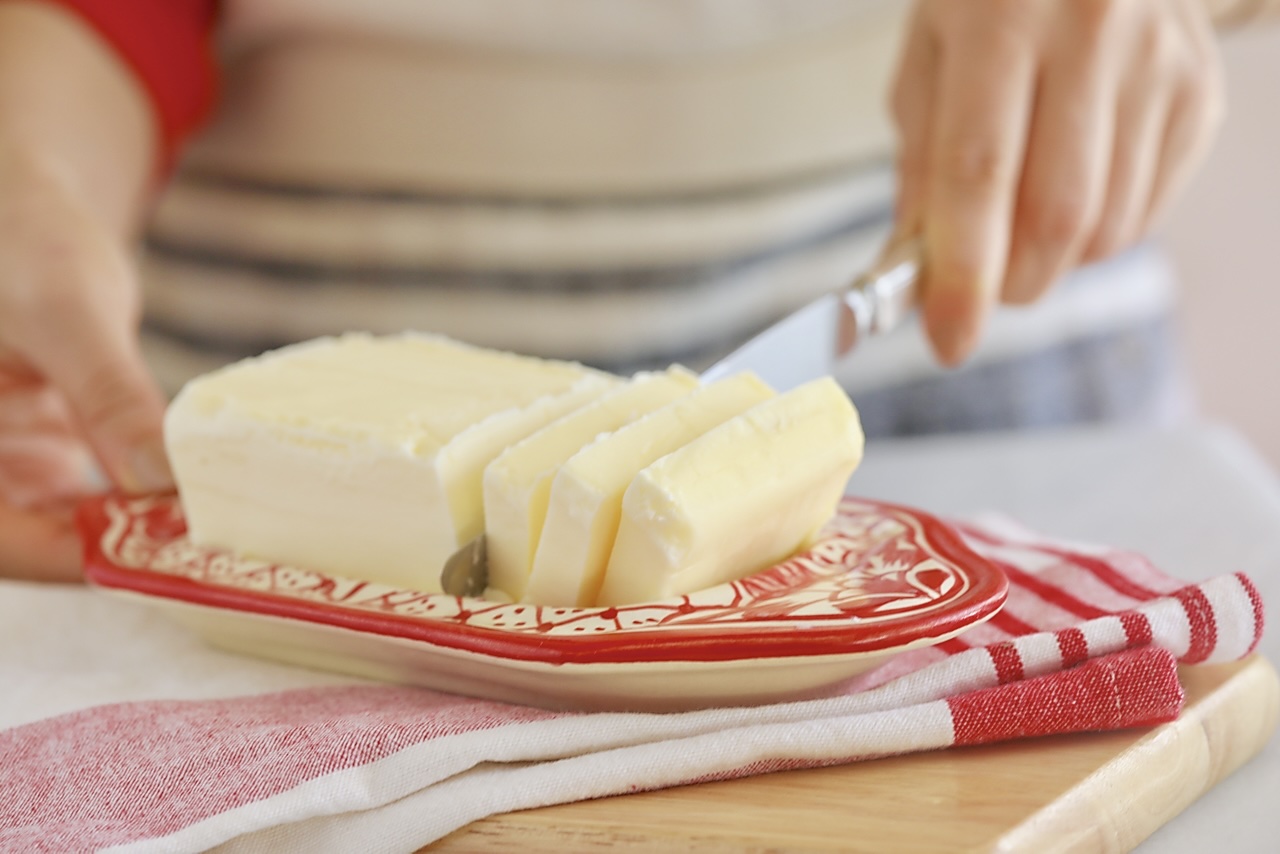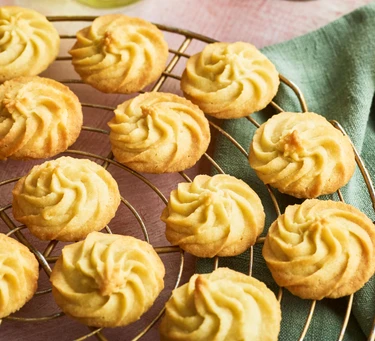Salted OR UNsalted Butter—Is it a Big Deal?
Is it important to follow the directions when a recipe calls for UNsalted butter? What’s the big deal? What difference does it make if I just go with what I have, which is always salted butter?

Turns out, there are some significant reasons why you should do what your recipe tells you—if it says “unsalted” butter, then that’s what you should use. The experts at Land O’ Lakes Butter put it this way: “Unsalted butter gives you complete control of the overall flavor of your recipe. This is especially important in certain baked goods where the pure, sweet cream flavor of butter is key (butter cookies or pound cakes). As it pertains to cooking, unsalted butter lets the real, natural flavor of your foods come through.”
You can tell by me even asking the question that I’m not a purist (a nice way of saying I struggle following directions and don’t like being told what to do). But I know for a fact that many, if not most of our Cook’n readers ARE purists, which is probably why you’re such good cooks. You people follow directions!
With that established, would you be interested in knowing if there’s one unsalted butter out there that’s better than another? I could quote oodles of research, but I’ll zero in on Tess Koman’s work at www.seriouseats.com. The folks at Serious Eats are superb food researchers and know their way around a kitchen. Here’s what Tess (and her counterparts) said after a day of testing:

“We pulled together 11 brands of unsalted butter that you're likely to find in your local supermarket. We methodically, empirically, scientifically tasted our way through them all in a quest to identify the very best.” The contenders:
- Finlandia Butter Imported Unsalted
- Vermont Creamery Cultured Unsalted Butter
- Land O Lakes Unsalted Butter
- Kerrygold Pure Irish Butter, Unsalted
- Beurre D'Isigny French AOP Unsalted Butter
- Organic Valley Unsalted Cultured Butter
- 365 Butter, Unsalted
- Vital Farms Unsalted Butter
- Horizon Organic Unsalted Butter
- Breakstone’s Unsalted Butter
- Plugrà Unsalted

As far as criteria, the butter had to smell good; whiffs of oil and acid earned negative marks. And of course, the butter had to taste good. Color wasn’t a significant issue. And the butter had to be easy to unwrap, dip into, and spread with ease. It shouldn’t take physical effort or dexterity to evenly coat your desired surface with the stuff. In order to gauge each sample’s true spreadability, the testers let the blocks sit out at room temperature for just over three hours. By the time they sampled, each of the 11 butters measured temps somewhere between 57-62 degrees.
And the test results? There just wasn’t a huge difference among any of these butters. It was pretty hard to tell any of these butters apart, aside from the faint tang of some of the cultured options. It’s worth noting that almost all of the scores hovered close to a very narrow one-point range. Basically, it was a toss up.

What few difference there were weren’t dramatic, life-altering, or even butter-purchasing altering. And that’s the good news. We can approach the butter section of our market free of the kind of decision-making anxiety that can freeze you in the cereal section for 43 minutes. You really can’t go wrong.
YAY and yippe! So with this established, let’s quit talkin’ about unsalted butter and do something creative and delicious with it. How about the best butter cookie on the planet?! Here for your baking and chomping pleasure is the world’s best butter cookie (according to www.food.com):
World's Best Butter Cookie

8 ounces unsalted butter
3/4 cup granulated sugar
1/4 teaspoon salt
1 1/2 teaspoons pure vanilla extract
1 large egg yolk
2 cups all-purpose flour
Directions:
1. Beat the butter, sugar, salt and vanilla together until smooth and creamy.
2. Mix in the egg yolk until well incorporated, scraping down the sides of the bowl at least once.
3. Add the flour and mix just until incorporated.
4. Scrape onto a lightly floured board and knead a few times, just until the dough smooths out.
5. Turn onto a sheet of plastic wrap and roll into a log, wrap up and refrigerate for several hours or freeze.
6. Before baking, preheat the oven to 325∞F.
7. Line your baking sheets with parchment.
8. Slice the dough into slices about 1/8" thick and place them on the sheets about an inch apart (they won't be spreading very much, but they need air room around each cookie).
9. Bake until JUST beginning to turn golden around the edges, about 16-18 minutes.
NOTES: This is a versatile cookie; you can do so much with it. You could roll the dough out and cut shapes. You could slice them even thinner and sandwich them with chocolate or jam or lemon curd. You could make them and then dip them half into chocolate. You can bake this dough in one large sheet and score as for shortbread cookies. You can pipe them into swirls. Just have fun!
2. Mix in the egg yolk until well incorporated, scraping down the sides of the bowl at least once.
3. Add the flour and mix just until incorporated.
4. Scrape onto a lightly floured board and knead a few times, just until the dough smooths out.
5. Turn onto a sheet of plastic wrap and roll into a log, wrap up and refrigerate for several hours or freeze.
6. Before baking, preheat the oven to 325∞F.
7. Line your baking sheets with parchment.
8. Slice the dough into slices about 1/8" thick and place them on the sheets about an inch apart (they won't be spreading very much, but they need air room around each cookie).
9. Bake until JUST beginning to turn golden around the edges, about 16-18 minutes.
NOTES: This is a versatile cookie; you can do so much with it. You could roll the dough out and cut shapes. You could slice them even thinner and sandwich them with chocolate or jam or lemon curd. You could make them and then dip them half into chocolate. You can bake this dough in one large sheet and score as for shortbread cookies. You can pipe them into swirls. Just have fun!
Recipe formatted with the Cook'n Recipe Software from DVO Enterprises.
 Alice Osborne
Alice Osborne
Weekly Newsletter Contributor since 2006
Email the author! alice@dvo.com
Sources:
- www.seriouseats.com
- www.easycookierecipes.com
- www.biggerbolderbaking.com
- www.newscientist.com
- www.bbcgoodfood.com
